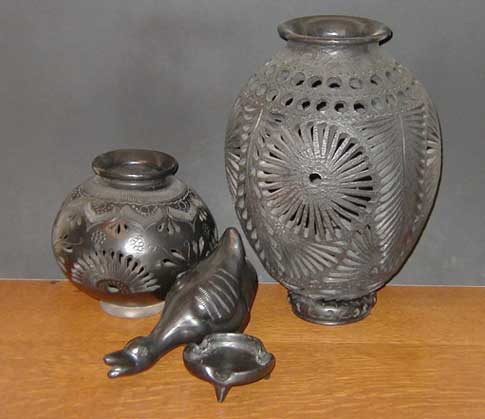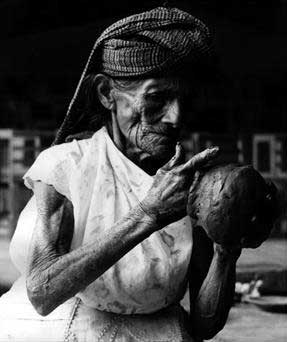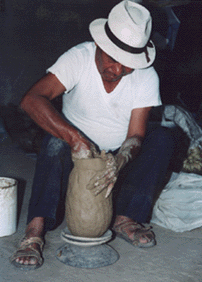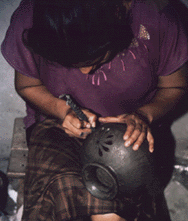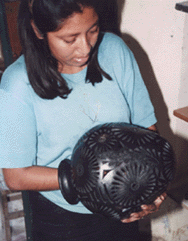 ClayHound Web
- Oaxaca
Pottery
ClayHound Web
- Oaxaca
PotteryReturn to:
|
Oaxaca is a province in southern Mexico. The pottery is distinguished by its black color. They are often carved. |
|
|
|
|
|
|
|
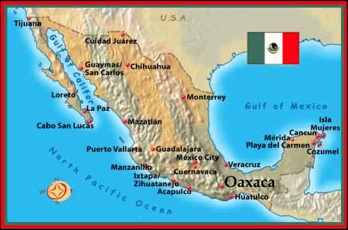 |
Oaxaca black pottery, known as barro negro is handcrafted work from the Dona Rosa studio and will have the name "Dona Rosa" engraved on each piece.
The Dona Rosa studio is located in San
Bartolo Coyotepec, in the state of Oaxaca, and is one of the most
important pottery producing villages in the valley of Oaxaca, Mexico.
Oaxaca is a state in which the indigenous groups and many of their
pre-hispanic and colonial cultural traditions persist. In the ceramic
production within these communities, one can see the varied levels of
technique, style and use in the utilitarian, ceremonial and ornamental
pottery for which is made. |
|
Dona Rosa Real de Nieto stood out as a unique artisan in Coyotepec for many years. Her studio's work has received numerous awards and is included in collections world-wide including those of Rockefeller and the Smithsonian Institute in the United States.
The technique she developed to give the
black pottery its trademark sheen is the burnishing of the pot with
quartz. No glazes are used. She worked in her shop demonstrating her abilities to those who came to visit until the day of her death in 1980. Her son and grandchildren continue the family traditions. The potters of Coyotepec continue to use their traditional method of turning pots without a wheel. The technique uses two concave clay plates, one upside down supporting the other. This method is of pre-hispanic inheritance, the pieces are molded on this device. The entire process to develop a finished piece takes 20 to 30 days and goes from molding to decoration, to slow drying in closed rooms, polishing with a quartz stone and finally to baking where the pieces acquire their notable black color. The pottery production of Coyotepec is mostly decorative because it will not hold water unless it is double fired. Double firing produces a grayish color, which are often used to hold mezcal, the local drink. In addition to pots, other works produced locally include animal figures, candelabras and a great variety other decorative items. From: http://www.farflungarts.com/Guide to Mexican Arts/Dona Rosa black pottery.htm |
|
|
|
|
